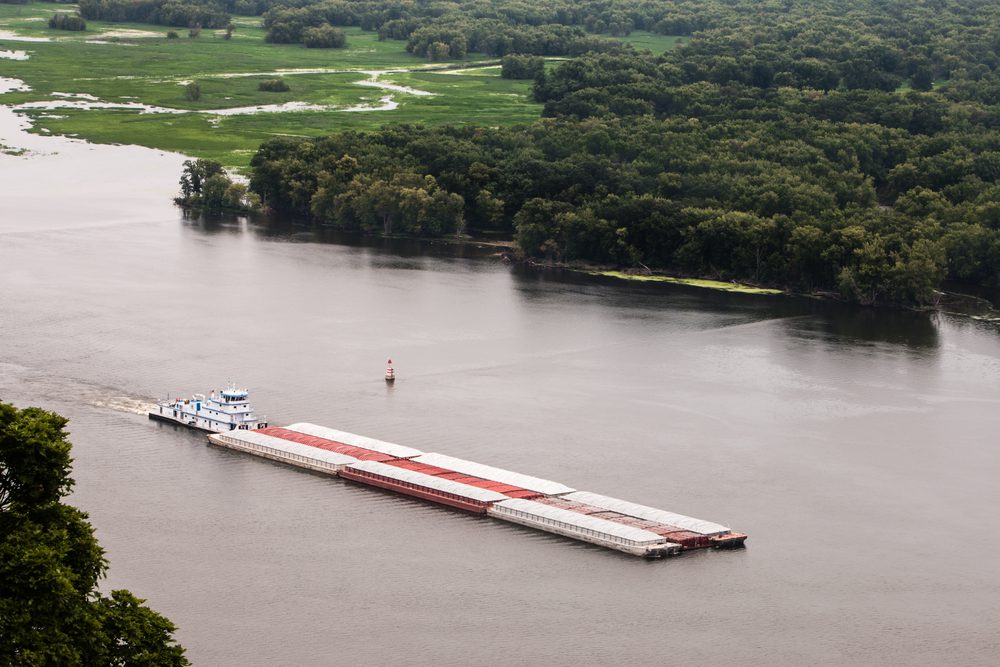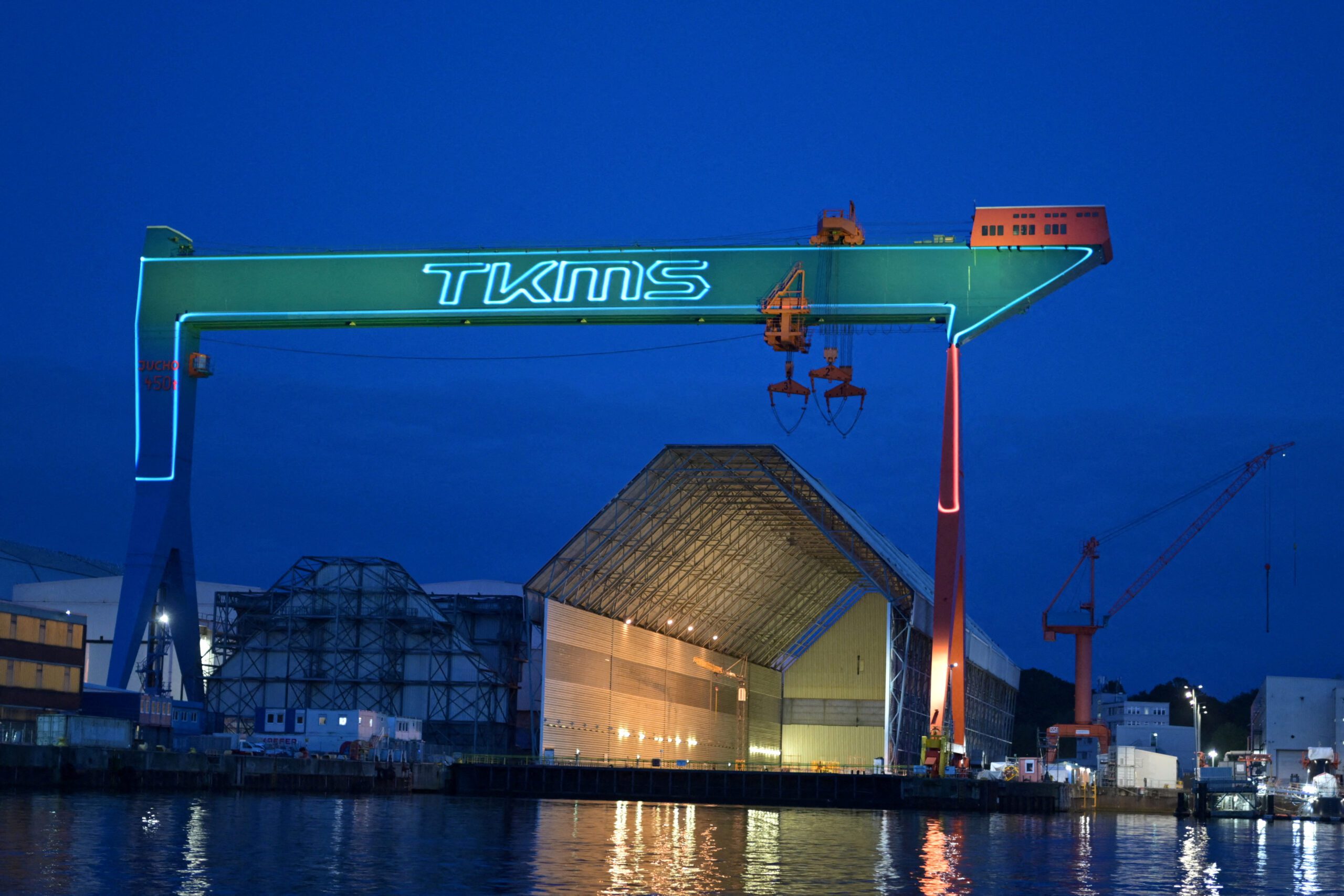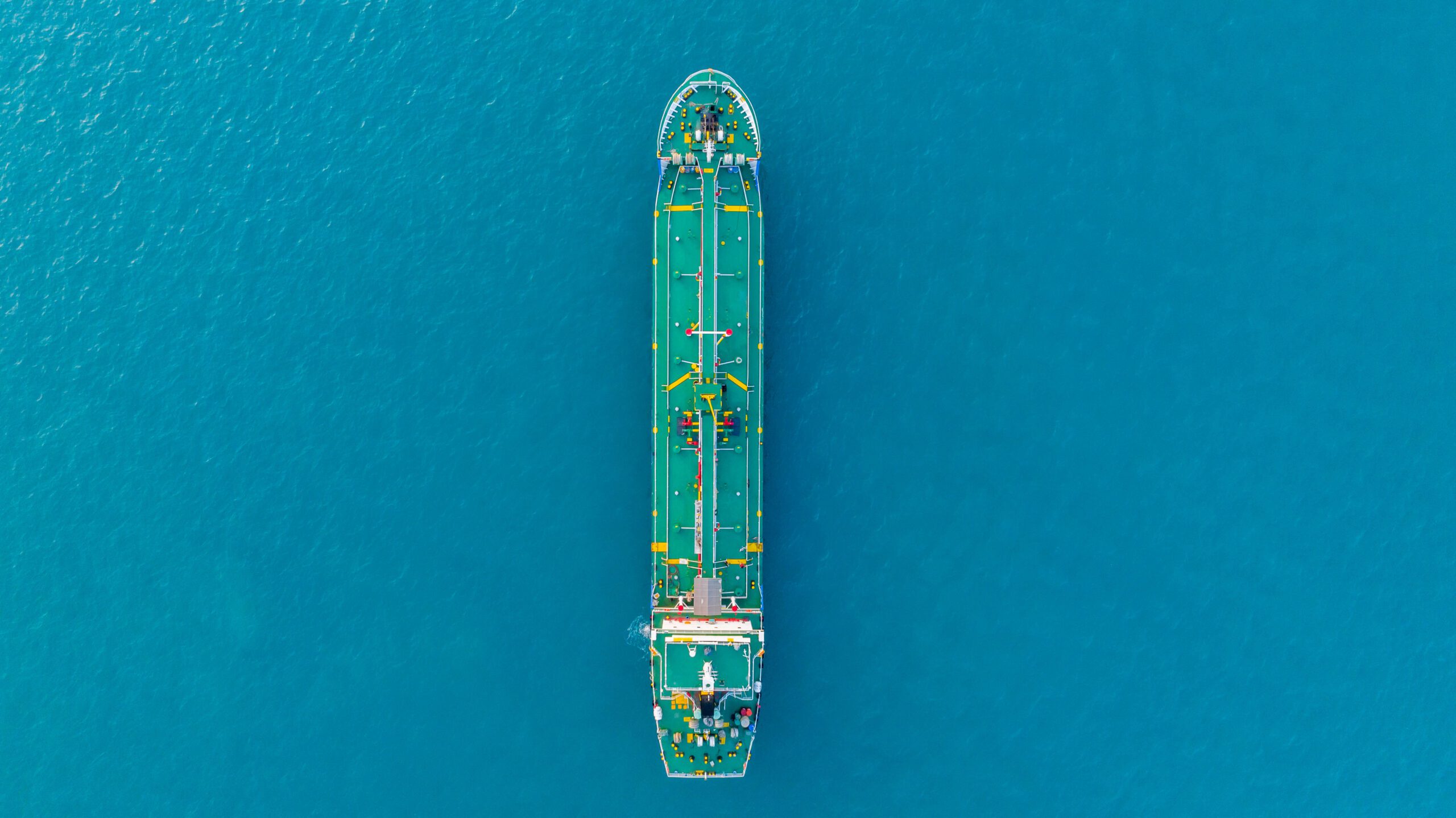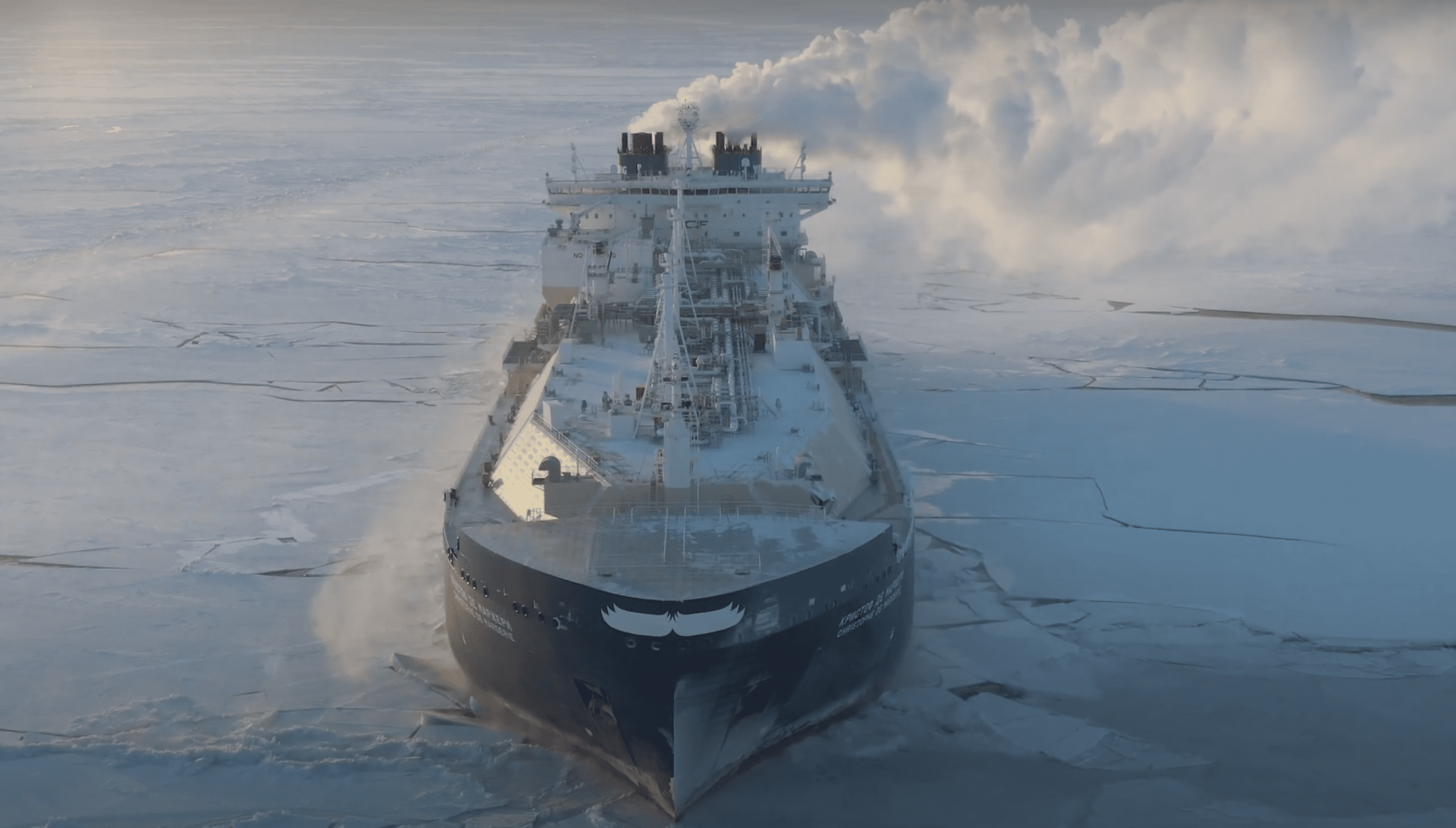By Elizabeth Elkin, Will Wade and Michael Hirtzer (Bloomberg) —
The Mississippi River is a vital US waterway that ferries key commodities between the heart of America and the Gulf Coast — and drought is putting waterborne trade in jeopardy.
Drought has depleted river water levels so much that in some spots barges are getting stuck. One shipping company said low water levels are causing severe impacts to navigation not seen since 1988. It’s a key concern for transporting goods from a river basin that produces 92% of the nation’s agricultural exports, especially during harvest season.
The Mississippi River is the main artery for US crop exports, with covered barges full of grain floating to terminals along the Gulf of Mexico. Petroleum and imported steel also transit through sections of the waterway as does fertilizer traveling from New Orleans. The dryness — and the low water levels it brings — imperils such commerce. In 2012, for instance, drought led to $35 billion in losses for the US, including closing the river three times.
Top US barge operator Ingram Barge Co. said low water levels are affecting part of its operating network below Baton Rouge, Louisiana.
“Chronic low water conditions throughout the inland river system have had a negative effect on many who rely on the river,” Chief Executive Officer John Roberts said Thursday in the email.
A barge carries 1,750 tons of dry cargo — the equivalent of 70 trucks. A tow hauling 15 barges can carry more than 900,000 bushels of grains and over 20 million gallons of liquid, according to the US Army Corps of Engineers. Shipping prices have soared in recent weeks.
No Rain
The reason for low river levels is simple: lack of rain.
Minneapolis received about a quarter-inch of rain in the past 30 days, below the average of almost 3 inches for this time of year, according to meteorologist Steve Silver of Maxar Technologies Inc. St. Louis received 0.86 inches, less than a third of average, and Memphis has seen a half-inch instead of more than 3 inches.
Many parts of the Midwest and Plains states are experiencing drought, which affects water flowing into tributaries that normally feed into the Mississippi, Silver said.
Things are unlikely to improve anytime soon. There’s less than an inch of rain expected across the region through the end of next week, according to Accuweather meteorologist Brandon Buckingham.
Here are the biggest market impacts:
Grains
Some 60% of all grain exported from the US is shipped along the river through New Orleans and the Port of South Louisiana, according to the National Park Service. The jam comes as farmers are in the middle of fall harvest, just when they’ll need to transport a lot of crops on the waterway. The stoppage could cause exports to drop. The threat is already hitting soybean futures, which fell to a two-month low Thursday.
“It’s extremely serious because of the time of year — this is exactly when the seasonal move of soybeans is happening,” said Alan Barrett, director of consulting and research at Higby Barrett in Memphis.
Volume on the waterway is effectively 45% lower than usual because each boat is pushing fewer barges, and each barge is carrying less than it normally would, he said.
Fertilizer
Farmers in the US apply fertilizer in November and a slowdown in river traffic could delay those crop inputs from reaching the Corn Belt in time, said Alexis Maxwell, an analyst at Bloomberg Intelligence. Nitrogen fertilizer, which corn farmers must apply every year, travels by river up from New Orleans to the Midwest.
About a one third of US consumption of the common nitrogen fertilizer urea moves on the Mississippi, Maxwell said.
Oil
Oil refineries along the Mississippi River aren’t likely affected so far, with the nearest being Ergon Refining Inc.’s small plant in Vicksburg, Mississippi, and Valero Energy Corp.’s Memphis facility.
Still, about 5.4 million barrels of crude and refined products move by tanker and barge between the Midwest and Gulf Coast each month, according to the EIA. Valero’s Memphis refinery sends products by barge north and east on the river, while Phillips 66’s Wood River refinery in Illinois also moves product by barge.
Coal
The Mississippi River is a major thoroughfare for thermal coal — the type that’s burned in power plants to run turbines and generate electricity — that is shipped around the world. Any snags threaten to disrupt trade at a time when coal demand is soaring as Europe weathers an energy crisis exacerbated by Russia’s war in Ukraine.
About 35% of US thermal coal for export travels on the Mississippi, so this will significantly affect the market, said Ernie Thrasher, CEO of Xcoal Energy & Resources LLC, a major US exporter.
“It will be a big disruption to supply,” Thrasher said.
–With assistance from Barbara Powell, Angel Adegbesan, Joe Deaux and Augusta Saraiva.
© 2022 Bloomberg L.P.

 Join The Club
Join The Club











